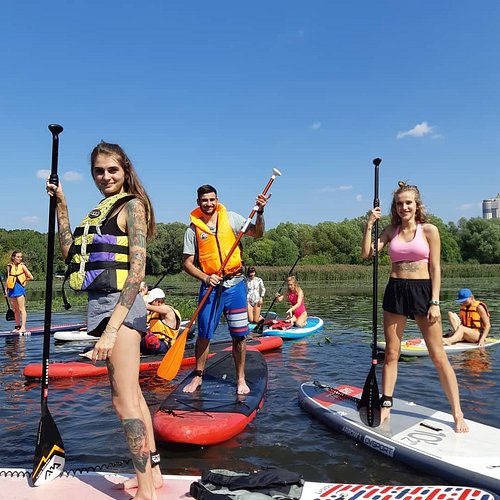Moscow Paddleboarding Craze Unveiled: Rising Rental Fees and Retail Prices Fuel Demand

Paddleboard Craze in Moscow: Soaring Prices and Surging Demand
Moscow’s Watersports Scene Faces a Price Revolution
In recent months, Moscow’s watersports scene has witnessed a remarkable shift as the cost to enjoy paddleboarding has surged. Paddling enthusiasts now face markedly higher fees, with hourly rentals currently ranging from 1,300 to 2,500 rubles. This reflects an increase of 30% to 40%, a pace not seen in previous years. Simultaneously, anyone seeking to purchase their own lightweight craft finds the cost has climbed, with average prices now standing between 21,000 and 26,000 rubles. This rapid change is sending ripples through local sporting and leisure sectors, sparking conversations among both business owners and the public.
Origins and Rapid Evolution of Paddleboarding in Moscow
The city’s embrace of paddleboarding, often called SUP in international circles, traces back to the global boom in aquasports over the past decade. Originally seen as niche, the activity gained popularity through events and workshops held on city rivers and lakes. Moscow’s diverse array of paddle venues, including clubs and adventure centers, enabled this unique blend of fitness, leisure, and social gathering to flourish. As local businesses expanded their offerings, the community around this sport grew in parallel — a trajectory highlighted by robust participation in guided excursions, competitions, and group outings.
Climate and Culture Drive Unprecedented Consumer Motivation
This summer’s extreme heat has been a major catalyst, drawing unprecedented crowds to Moscow’s waterways. With high temperatures persisting, residents increasingly turn to aquatic escapes as a means of both recreation and relief. Further compounding the trend, visually striking photo sessions set on water have become a sought-after experience. The visual appeal of paddleboarding, combined with scenic city backdrops and social media buzz, has transformed these outings into highly desirable activities, fueling higher demand for both hourly rentals and ownership.
Defining Terms: Rental and Retail Distinctions
Within the city’s aquatic leisure market, there are two pivotal financial aspects: short-term access and outright purchase. Renting a paddleboard provides flexibility and affordability for those testing the waters or seeking occasional adventure. Meanwhile, acquiring personal equipment signals more serious commitment, reflecting a lifestyle choice for residents who visit city lakes and rivers regularly. It is important to note that price movements in both these segments reflect both consumer enthusiasm and supply-side challenges, each influencing how Moscow’s aquatic culture evolves.
Milestones Amid Market Shifts
Several unmistakable milestones have defined recent developments. The most significant is the substantial increase in the cost of enjoying this pastime, marking a key turning point for accessibility. For local entrepreneurs and rental operators, responding to surging interest has meant adapting to logistical challenges and, in many cases, implementing revised pricing to maintain sustainable operations. Simultaneously, suppliers and retailers tracking product availability have found their inventory affected, contributing to an uptick in retail values that matches the uplift seen in hourly access fees.
Pivotal Factors Reshaping Moscow’s Paddleboard Market
Among the core drivers, two phenomena stand out. First, the relentless heat has intensified demand, amplifying the sport’s underlying appeal. Outdoor enthusiasts and casual participants alike increasingly seek ways to cool off, making paddleboarding particularly attractive. Second, the cultural trend toward eye-catching waterborne photography adds a new dimension to the market; the quest for the perfect image on glassy urban water has turned photo-friendly rentals into a premium service. Together, these tendencies have made Moscow’s scene a focal point for both recreation and visual storytelling.
Outlook for Enthusiasts and Industry Players
As 2025 progresses, Moscow’s aquatic leisure sector stands at a crossroads. For enthusiasts, higher prices complicate impulsive participation, possibly nudging more toward board ownership over short-term use. For operators and retailers, striking a balance between accessibility and profitability will be key. Businesses attuned to evolving consumer expectations—such as demand for organized excursions or customized photogenic experiences—are most likely to thrive. The endurance of the current pricing trend will depend not just on weather patterns, but also on broader consumer sentiment and economic factors in the months ahead.
Conclusion: Navigating Changing Currents
Moscow’s paddleboard market has entered a new chapter defined by notable price adjustments, a vibrant culture of on-water activity, and surging popularity amid climatic extremes. While affordability may face challenges, the underlying appeal of urban aquasports appears stronger than ever. The convergence of climate, visual culture, and active lifestyles is shaping not only how Muscovites engage with their environment but also how leisure businesses position themselves in a summer like no other.
